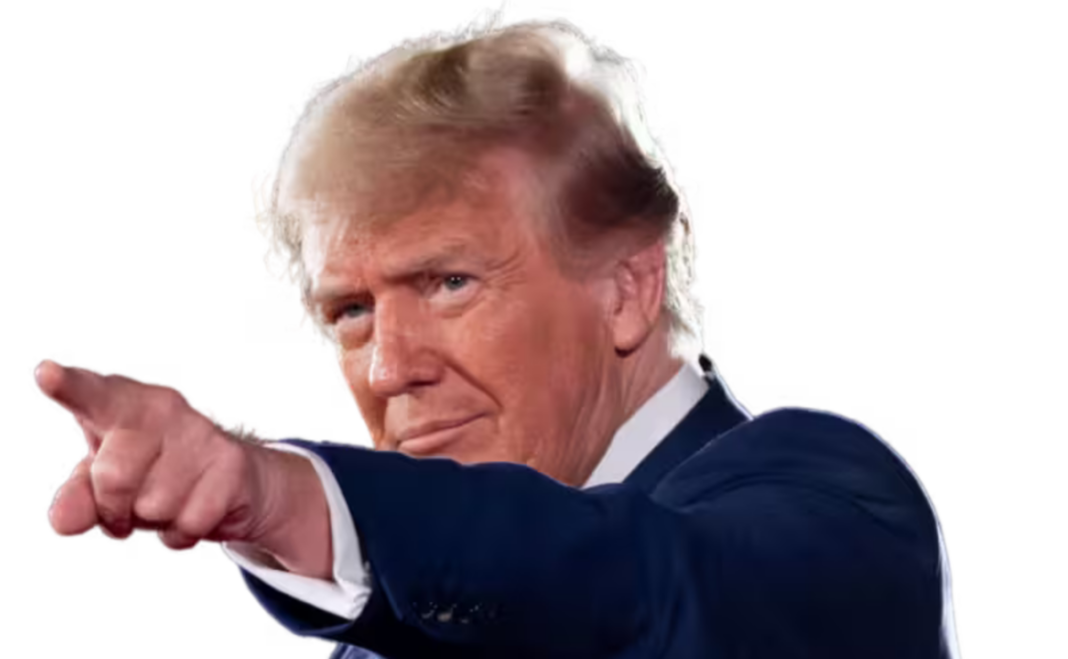Donald Trump’s return to the White House has been nothing short of eventful. In just one month, his administration has taken sweeping actions on immigration, federal workforce restructuring, and foreign policy—drawing both strong support and intense backlash. While his base praises the rapid fulfillment of campaign promises, critics warn that some measures could face significant legal and political hurdles.
Key Actions and Policies
1. Immigration Crackdown: Swift and Controversial
Immigration has been a central focus of Trump’s early presidency, with sweeping enforcement actions and new policy directives reshaping the landscape.
- Since January 20, nearly 11,000 undocumented immigrants have been deported to Mexico, as federal authorities ramp up removals.
- Funding for sanctuary cities has been cut, prompting legal challenges from multiple states and civil rights organizations.
- Border wall construction has accelerated, with Trump touting new contracts for additional miles of fencing.
- The administration has introduced stricter asylum policies, significantly reducing eligibility for migrants seeking protection in the U.S.
Supporters argue these moves restore order to the immigration system, while critics warn they could fuel humanitarian crises and constitutional challenges.
2. Federal Workforce Overhaul: USAID Nearly Dismantled
Trump’s approach to government reform has been aggressive, with major reductions in federal agencies, particularly USAID (U.S. Agency for International Development).
- USAID’s workforce has been cut from 14,000 to just 300 employees, effectively gutting the agency.
- The administration has signaled plans to eliminate USAID entirely, shifting foreign aid programs under the State Department.
- A federal hiring freeze has been implemented across multiple agencies, including the EPA, Department of Labor, and Department of Education.
Trump defends these actions as necessary to cut bureaucratic waste, but critics warn that downsizing USAID could damage U.S. global influence and humanitarian efforts.
3. A Wave of Executive Orders
Trump has signed 26 executive orders in his first month, swiftly undoing many Biden-era policies:
- Immigration: Expanded ICE authority and reallocated funding for border enforcement.
- Climate Policy: Withdrew the U.S. from international climate commitments and lifted restrictions on fossil fuel production.
- Federal Budget: Ordered a review of federal spending, pushing for deep cuts in social programs.
- Healthcare: Reinstated the Mexico City Policy, blocking U.S. aid to organizations that provide abortion services.
These reversals have thrilled conservatives but ignited fierce opposition from Democrats, environmental groups, and civil rights advocates.
4. The Elon Musk Factor: A Bold Cabinet Pick
One of Trump’s most unexpected moves was nominating Elon Musk as Secretary of Technology, a newly created position overseeing the Department of Science and Engineering (DOSE).
- DOSE aims to streamline federal scientific efforts and boost public-private tech partnerships.
- Musk’s role would include AI development, space policy, and deregulating key tech industries.
- While tech leaders have largely welcomed the move, concerns over conflicts of interest and regulatory oversight have emerged.
Musk’s confirmation process is expected to be contentious, with lawmakers on both sides raising concerns about corporate influence in government.
5. Legal Battles and Political Pushback
Several of Trump’s most aggressive policies are already facing legal challenges:
- Birthright Citizenship Order Blocked: Federal courts have temporarily halted Trump’s order attempting to end birthright citizenship, citing constitutional concerns.
- Federal Workforce Lawsuits: Labor unions have sued over the mass layoffs at USAID, arguing they violate employment protections.
- Immigration Lawsuits: Civil rights groups are challenging Trump’s expanded deportation policies in court.
These legal fights could delay or derail some of Trump’s most ambitious initiatives.
6. Trade and Foreign Policy: A Shift in U.S. Strategy
On the global stage, Trump has begun reshaping trade and diplomatic relations:
- The administration is seeking new trade agreements with China, aiming to reduce trade imbalances.
- Trump has threatened tariffs on European imports, sparking tensions with EU leaders.
- Changes to USMCA (United States-Mexico-Canada Agreement) are under discussion, with a focus on protecting U.S. industries.
While Trump’s supporters view these moves as necessary to strengthen the U.S. economy, critics warn they could trigger retaliatory tariffs and economic instability.
7. Israel-Palestine Conflict: Trump’s High-Stakes Diplomacy
The ongoing conflict between Israel and Palestine has become a key foreign policy test for Trump.
- The administration has reaffirmed unwavering support for Israel, increasing military aid and diplomatic backing.
- Trump has personally engaged in ceasefire negotiations, though his efforts have received mixed reactions.
- His recognition of Israeli sovereignty over contested territories has drawn sharp criticism from Palestinian leaders and some European allies.
While Trump frames his approach as decisive leadership, some warn it could escalate tensions rather than resolve them.
Public and Political Reactions
As expected, Trump’s first month has deepened political divisions:
- Democrats and legal experts call many of his executive orders unconstitutional and warn they could be overturned.
- Republicans largely support his policies but remain split on issues like trade negotiations and federal agency cuts.
- Protests and demonstrations have erupted nationwide, particularly over immigration and environmental policies.
Despite opposition, Trump’s approval among his base remains solid, indicating strong Republican support for his policy agenda.
What’s Next?
As Trump moves forward with his second term, key areas to watch include:
- Immigration enforcement: Further crackdowns and potential new legislation.
- Federal spending: Proposed budget cuts and agency restructuring.
- Foreign policy shifts: Growing tensions with China, the EU, and Middle Eastern nations.
- Legal battles: How courts rule on major executive actions.
- Technology policy: Elon Musk’s potential confirmation and the launch of DOSE.
Trump’s ability to navigate these challenges will determine the trajectory of his second term. Whether his aggressive approach secures lasting policy wins or sparks further legal and political resistance remains to be seen.
A global media for the latest news, entertainment, music fashion, and more.




